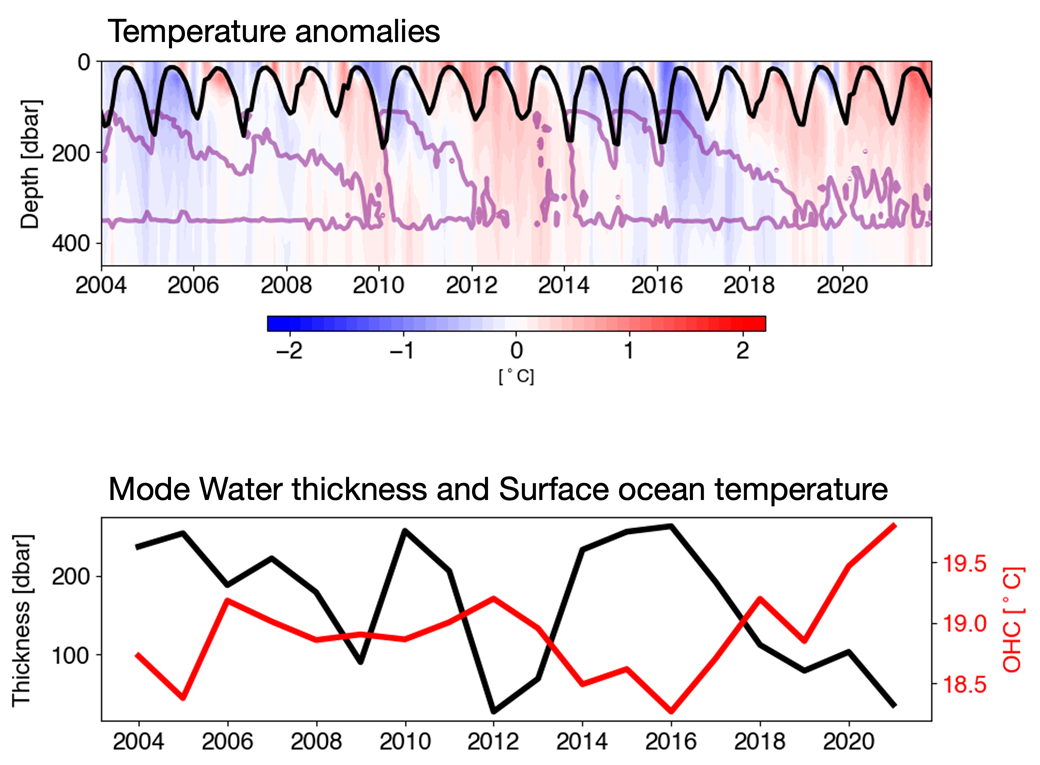Marine heatwave associated with loss of a huge water mass in the ocean interior
Sea surface temperature (SST) is one of the most important parameters for the air-sea heat exchange, and its variability affects global atmospheric circulation. Marine heatwaves (MHWs), which are prolonged extremely high SST events compared with past decades, have frequently occurred in mid-latitude regions in recent years. For example, MHWs repeatedly occurred every summer from 2010 to 2016 in the Pacific off Tohoku, drastically increasing catch of yellowtail. The persistent MHWs over 2013–2015 off the west coast of North America, called the Blob, changed the habitats of whales, fish, and seabirds, impacting ecosystems, fishery resources, and the human society along the coast. It is important to reveal the mechanism of formation/persistence of MHWs to predict and reduce their damage to ecosystems and human society.
In summer 2021, a record breaking MHW was observed in the central North Pacific, where the SST anomaly exceed +3℃ (Fig. 1). Previous studies have explained that MHWs are driven by atmospheric forcing such as stronger solar radiation and weaker sea surface winds. However, our analysis of atmospheric data showed that the atmosphere-induced heating is not sufficient to form the record breaking MHW in summer 2021.

Next, we analyzed data from Argo profiling floats (approximately 4,000 autonomous robots observing the world’s oceans) to examine the relation to oceanic structure. We found that a huge water mass (vertically uniform water called Central Mode Water), which usually exists at depths of 100–400 m in the central North Pacific, decreased drastically in 2021 (Fig. 2), accompanied by a temperature increase in the overlying layer (from the sea surface to 100 m depth). Based on this result, we proposed that the decrease in Central Mode Water lowered the overlying layer and generated the record breaking MHW. The absence of Central Mode Water in that summer might be due to the change in its formation region (i.e., the region where deep oceanic convection occurs in winter), and needs to be clarified in future studies.

In this study, we qualitatively understood the relationship between a huge water mass and near-surface ocean temperature. In the future, we plan to reveal roles of the huge water mass and oceanic internal structure in the occurrence of MHWs, through statistical analysis and numerical experiments.
For more details:
Nishihira, G. and S. Sugimoto (2024): Record breaking marine heatwave over the central North Pacific in 2021 summer: its formation associated with loss of Central Mode Water. Journal of Physical Oceanography, in press, doi:10.1175/JPO-D-24-0021.1.
(Gaku Nishihira@A01-1, ECHOES. November 2024)
